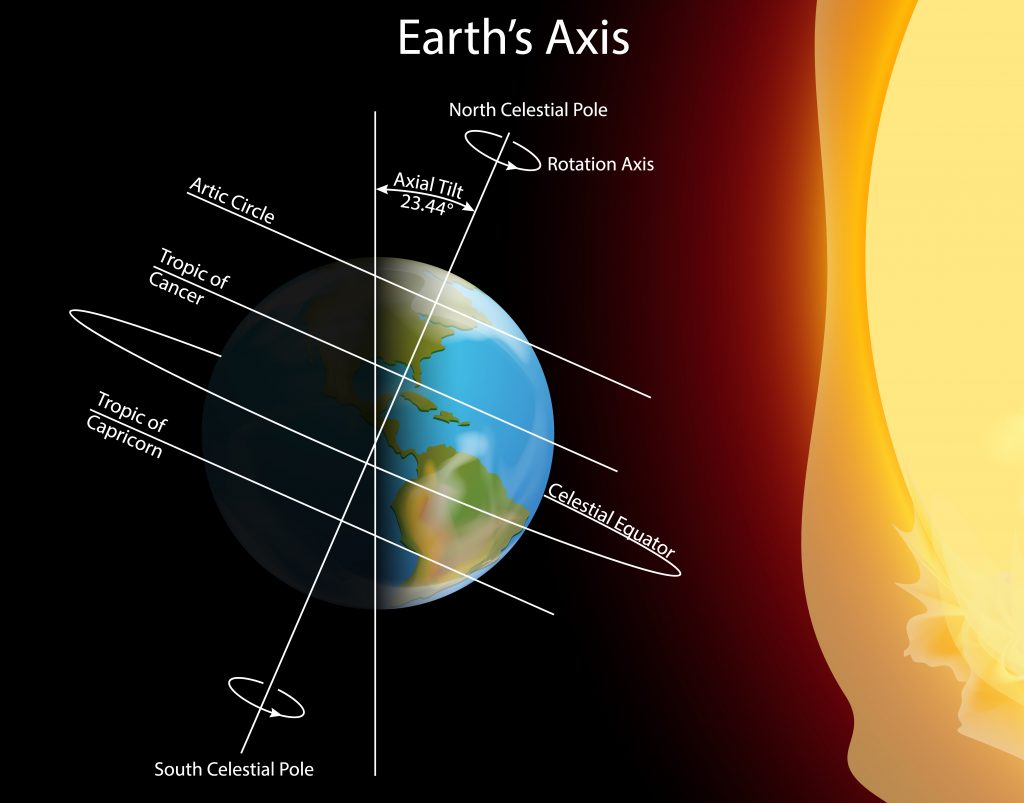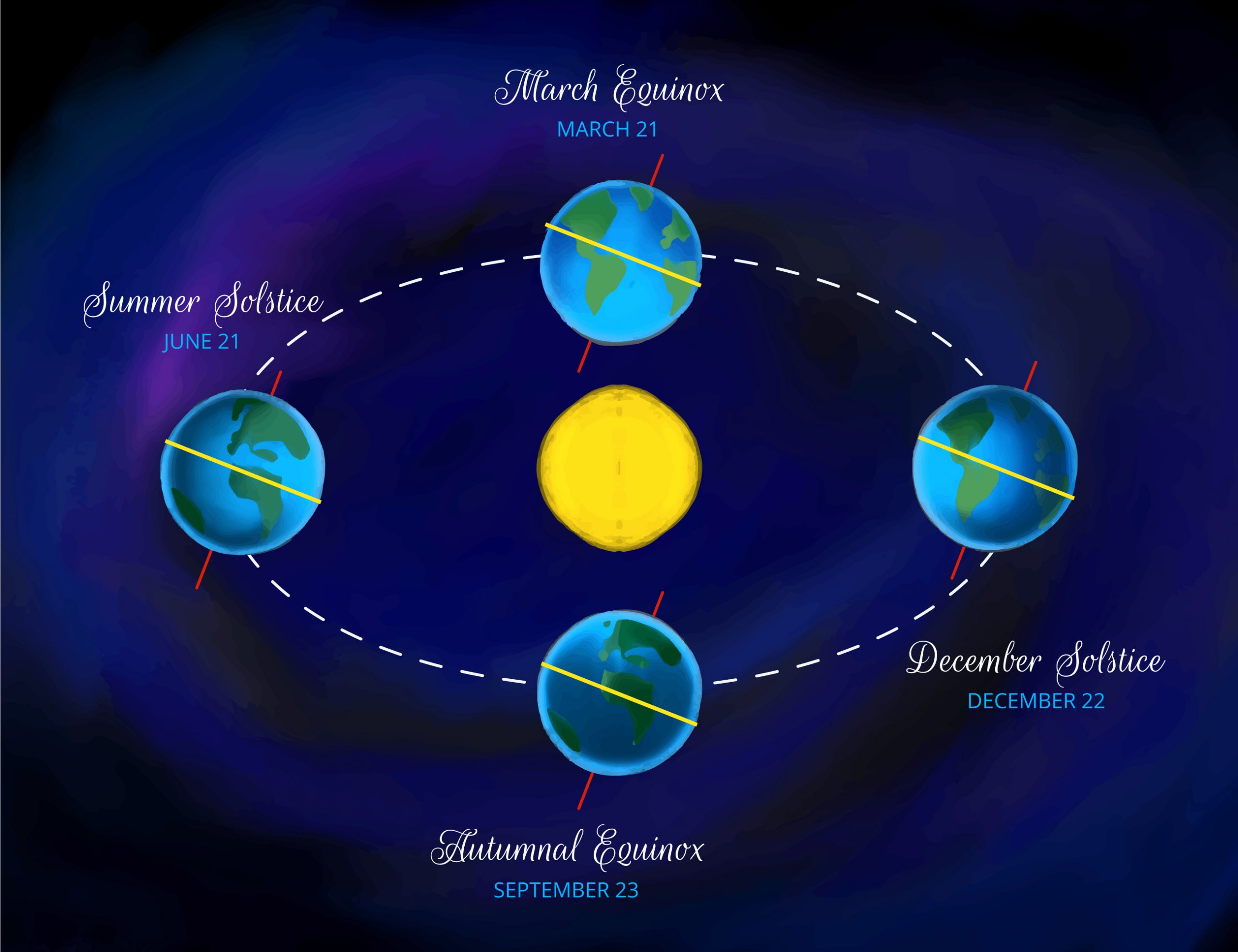News Highlights:
- The Vernal Equinox or March Equinox will be observed on 20 March 2023
- The equinox is also called the spring equinox in the northern hemisphere and the autumn equinox in the southern hemisphere.
What is Equinox?
- About:
- Equinox happens twice a year when the sun is directly above the equator, and it occurs on approximately the 21st of March and 23rd of September.
- During an equinox, the Northern and Southern Hemispheres have equal day and night time.
- The vernal equinox (spring equinox) takes place in the Northern Hemisphere around the 20th or 21st of March; in the Southern Hemisphere, it happens on the 22nd or 23rd of September.
- Conversely, during the autumn season in the Northern Hemisphere, on 23rd September (autumn equinox), it is springtime in the Southern Hemisphere, and on 21st March, it is the opposite.
- Reasons:
- The phenomenon occurs due to the Earth’s axial tilt, or the angle by which the planet is tilted relative to the Sun.
- The imaginary axis of our planet is not straight up and down but is tilted by 23.5 degrees.
- This is why different regions of the Earth experience different measures of sunlight.
- Significance:
- As a result, the Sun is located directly above the equator, and both hemispheres receive an equal amount of sunlight.
- After the spring equinox, the northern hemisphere tilts closer to the sun in March, resulting in more daylight hours, with earlier sunrises and later sunsets.
- According to Hindu astrology, Vernal Equinox is Vasant Vishuva or Vasant Sampat.
- The Spring equinox brings earlier sunrises, later sunsets, and sprouting plants in the northern hemisphere.
- Later sunrises, earlier sunsets, chillier winds, and dry and falling leaves are observed in the south of the equator (southern hemisphere).

Solstice (Summer & Winter)
- About
- Summer Solstice and Winter Solstice describe the shortest and longest days of the summer and winter seasons.
- The summer solstice occurs when one of the Earth’s poles (North pole) has its maximum tilt toward the Sun.
- The winter solstice or hibernal solstice occurs when one of the Earth’s poles (North Pole) has its maximum tilt away from the Sun.
- Difference between summer and winter solstice:
- The main difference between the summer solstice and the winter solstice is the amount of daylight each day.
- On the summer solstice, there are about 24 hours of daylight, while on the winter solstice, there are only about 12 hours of daylight.
- The summer solstice is also warmer than the winter solstice.
Pic Courtesy: Freepik
Content Source: Times of India



